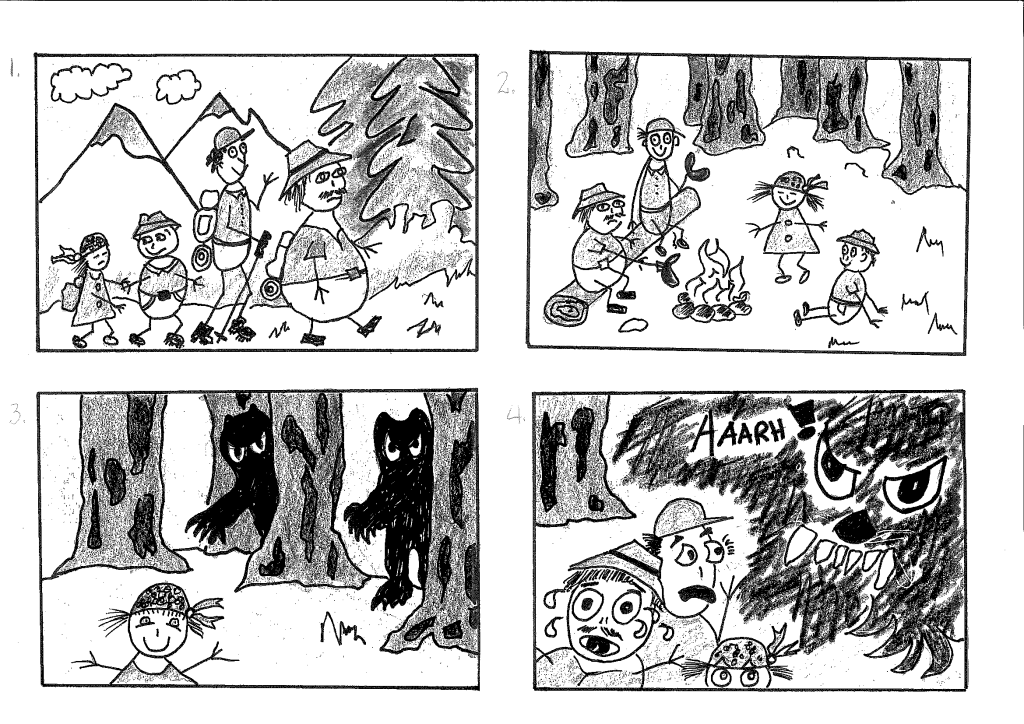For this part of the exercise, you are required to make up your own story and present it in five frames.
This is my story, which I hope is slightly funny:
![]()


Frame 1: A group of two adults and two children set off to camp in the forests. They not your typical rugged, outdoor types and would look more at home in a shopping mall.
Frame 2: The group has arrive in the forest and set up a campfire. They are sitting around the fire.
Frame 3: Lurking in the trees are some indeterminate, shadowy figures.
Frame 4: Shadowy figure jumps out from the trees and roars at the group who get a big fright and sensibly run away.
Frame 5: The shadow figures turn out to be bears who aren’t that scary after all but just pretended to be. Once the people had run away, the bears settle down in front of the fire to roast marshmallows.
A bit of reflection: What I have learnt is that it is important to have visually thought through your story (and message) to make sure that it has a logical flow, that the meaning you intended to convey is ‘visible’ in your images. I also realized that when faced with a limited number of frames, you need to make choices about what to show and what not to show. If you show every detail or try to put too much information into one frame, you run the risk of the viewer not knowing what is important and subsequently not understanding the story. On the other hand, if you don’t put the essential information in, the story could be lost as well.
The second thing that I have learnt is that the storyboard is a tool that you use to help plan out the type of shot/s and angles that will be most effective for each scene. Thinking through the elements of the storyboard, how they connect and how to create meaning is easier for me to do quietly alone when I don’t feel pressured by people around me. I think I would end up with very different shots if I were to just start filming without having visually thought it through.
I would imagine though that there is a balance between what you plan on the storyboard and what you are willing to change when you start filming and need to adapt to the environment, or you (or someone else) see that something isn’t quite working out the way the storyboard showed it and that an alternative would be more effective.
